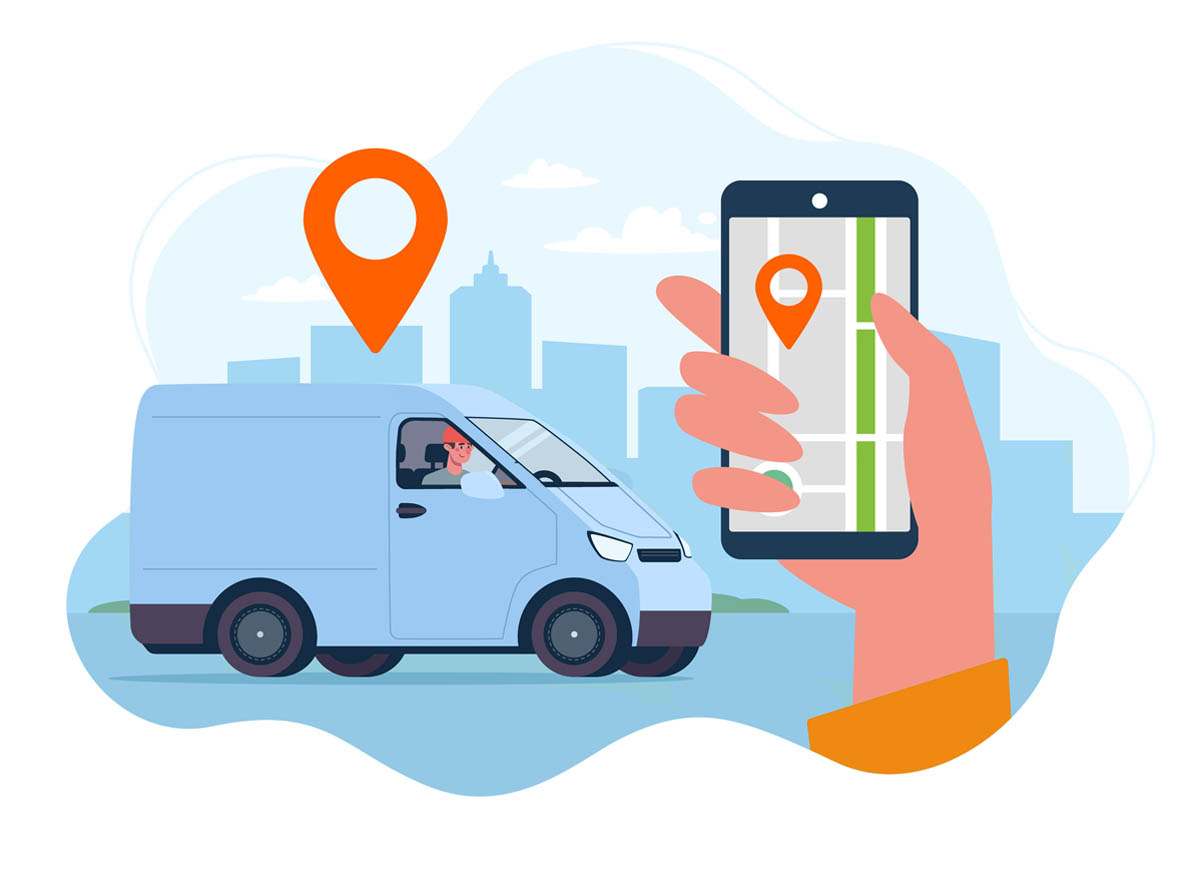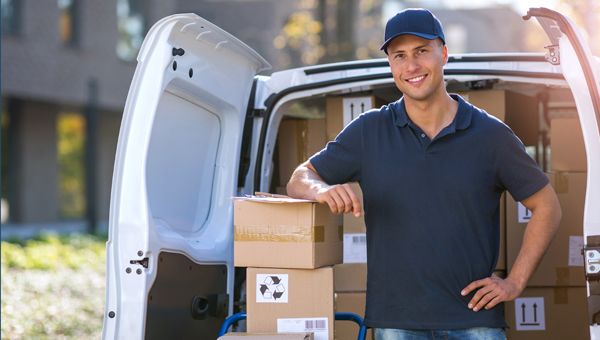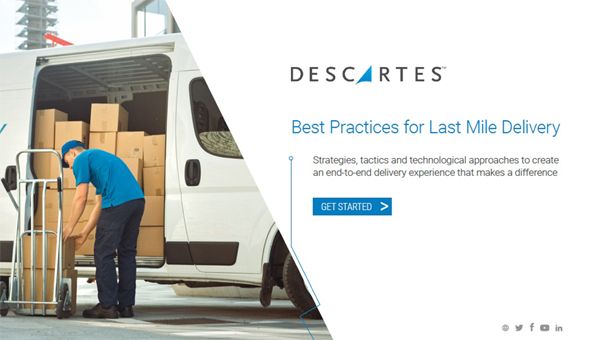What is final mile delivery and why should you invest in it?

What is Final Mile Delivery?
The act of transporting goods from transport hubs or local warehousing facilities to their final destination, usually a customer's business address or residence, is known as final mile delivery.
Final mile delivery plays a significant role in driving customer satisfaction, managing delivery costs, and reducing CO2 emissions, so it is critical to manage this leg of the delivery.
Discover Your Final Mile Solution
In this Final Mile Delivery article, we discuss:
5 Key Reasons you should prioritise Final Mile Delivery
What Final Mile Delivery means
Final Mile Delivery challenges
How to lower Final Mile Delivery costs and maximise fleet resources
How Final Mile Delivery can become a competitive tool for your business
5 Key Reasons you should prioritise Final Mile Delivery
- E-Commerce revenue in the UK now accounts for 1/4 of total retail sales (£80.7 million) and is expected to grow at 3.5% annually. According to a recent Descartes Survey, 48% of respondents plan to make more online purchases in the future.
- Consumers will increasingly demand flexibility and choice in their online purchasing journey.
- According to research conducted by Statista, 70% of UK Consumers feel that an exact time delivery slot (e.g a 1 hour window) would make them more likely to purchase from a website/e-retailer.
- Notifications are an important factor in final mile delivery, with around 50% of consumers stating that visibility of same-day delivery items would make them more likely to use an online retailer. Consumers value real-time delivery notifications and keeping them informed increases On Time in Full (OTIF) deliveries to improve overall customer satisfaction.
- The recent Descartes’ eCommerce – retailer fulfilment survey discovered that three out of four consumers had experienced delivery problems in a three-month period and that 23% of them had not ordered from that retailer again due to poor deliveries, while a further 21% lost trust in the retailer. (link to research)
What does Final Mile Delivery mean?
The final mile, also known as last mile delivery, is the delivery of a product to the final buyer or consumer. The average cost of final mile delivery accounts for more than half of total delivery costs and is the most important in terms of customer service.
What is the Final Mile Delivery problem?
Due to the volume and exacting geographical location, restrictive covenants such as clean air zones, and delivery scheduling, final mile delivery is a complex process.
There are several challenges to overcome when focusing on Final Mile Delivery, including:
- Cost: Despite rising fuel and other logistical costs, consumers still want a diverse range of delivery options at a reasonable price, or, in some cases, free of charge.
- Utilisation: In many cases, the fleet size is fixed, which means that regardless of seasonal demand, the fleet must fulfil orders with maximum efficiency in order to utilise the fleet assets to their full potential without bias on specific vehicles or drivers.
- Security: With many consumers now opting for home deliveries during the working day, it is critical that items be accounted for when delivered via Proof of Delivery (POD), while the delivery company also wishes to ensure that as many deliveries as possible are made without damage and that losses are minimised.
- Communication: Consumers want transparency, and delivery providers must communicate by providing notifications along the final mile of delivery, but they must also be dependable and meet the delivery promises made.
- Competition: If your competitor isn't managing final mile delivery effectively, you have a huge opportunity to differentiate... And if they are, you should consider beginning to manage your final mile service! Offering an excellent delivery service and customer experience can provide a competitive advantage.
While the final mile is a difficult problem to solve, it can also be profitable, resulting in increased consumer satisfaction and repeat purchases.
Providing a good service and meeting customers' delivery expectations can be difficult for some businesses. However, by combining a good multi-drop delivery scheduling solution with route optimisation software that uses the most recent road traffic data, a significant difference in a company's productivity and efficiency can be quickly made.
Overcome these challenges with our Final Mile Delivery Ebook
Last Mile Delivery - Competitive Advantage
All fields marked with * are mandatory.
Please fill out the below form and submit, your download will then begin automatically
How can Final Mile Delivery costs be lowered, and existing fleet resources maximised?
Advanced route planning
Ensuring that the best vehicles are assigned to orders based on their profile, such as size, emissions, or chilled vs. ambient, will help reduce miles travelled, avoid tolls in areas such as low emission or clean air zones, and reduce driving distance. These outputs can result in a 25% increase in vehicle utilisation and a 35% reduction in fuel costs.
Reduced time in planning delivery routes
By utilising route planning software, delivery planners' time can be used more proactively to drive continuous improvement. Concentrating on exceptions and daily issues rather than spending many hours creating routes and delivery schedules. Real-time visibility of a vehicle's location can also help with issues as they arise so they can be addressed before they become a bigger problem and enable more efficient reroutes when necessary.
Management of internal fleet or 3rd Parties
Data analysis of miles travelled, routes taken, OTIF deliveries, time in transit, and time at delivery provides a clear picture of the issues and an enhanced tool for managing internal and external fleets, supporting, and driving efficiency gains.
Dynamic Reservation Costs
The ability to increase profitability through dynamic delivery pricing, which is reflected in the delivery slots offered, can encourage customers to choose delivery dates and times that are actually the most efficient for the fleet.
This is accomplished through differentiated delivery pricing based on location, current delivery schedule, and orders already received. If another delivery is nearby, the price remains low, driving delivery density for that route; however, if the location or time selected is remote, the price may rise on that specific date, encouraging the customer to choose a lower-cost delivery slot on a different date or time.
Reduce claims for missing or damaged parcels
Claims for missing or damaged items can be greatly reduced by using electronic Proof of Delivery (ePOD). This reduction in credits can result in significant savings, not only in terms of the cost of goods but also in the time it takes customer service to deal with incoming calls and resolve claims.
Reduce the number of missed deliveries
Missed deliveries can be reduced through real-time customer notifications and advanced communication on delivery time and date. This is especially important when the end consumer must be present to accept the delivery due to the nature of the goods or service. Avoiding a second delivery will significantly reduce delivery costs, while delivery notifications with an ETA will also reduce calls to Customer Support asking, "where is my delivery?".
How can Final mile delivery become a competitive tool for your business?
Increased OTIF deliveries
With around 69% of consumers less likely to return to a brand that fails to deliver within two days of the promised time window, it is critical that goods are delivered on time and in full every time. Customers' expectations are managed through real-time notifications and advanced visibility, as well as real-time traffic notifications informing the fleet to make correct routing decisions and informing consumers of any notable changes in delivery schedules.
While using an advanced route optimisation tool in conjunction with delivery scheduling software, delivery slots can be reduced from half a day to one hour or even 30-minute slots with high confidence that the ETA will be met. This not only reduces the amount of time a customer must be present at the location to receive their delivery and increasing customer satisfaction, but it also increases the likelihood that the customer will be present to receive the booked delivery because they have chosen a time that is convenient for them.
Increase Click-to-Cart conversion
Businesses see a significant reduction in cart abandonment by lowering delivery costs and providing more delivery options. Providing clear costed choices for delivery at the online payment checkout is critical for reducing cart abandonment and encouraging purchase completion. With so many abandoned carts, the opportunity cost of not offering consumers a dedicated delivery date and short time slot, rather than sometime within the next three days, is too high to bear.
Giving consumers choice
Whether you are delivering B2B or B2C, customers want a choice and clarity of costs and delivery service. If you support customers’ choice of when and where they can receive a delivery, you are already differentiating your service.
You can find out more about how Descartes has supported a number of businesses in creating a final mile key differentiator within our customer case studies.
Use the form below to contact a Final Mile Delivery Expert
Author: James Redfearn, Senior Account Executive, Descartes Systems UK



